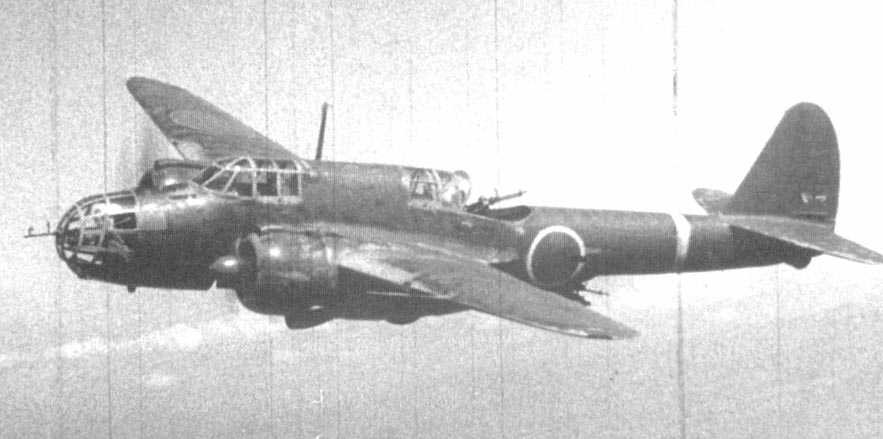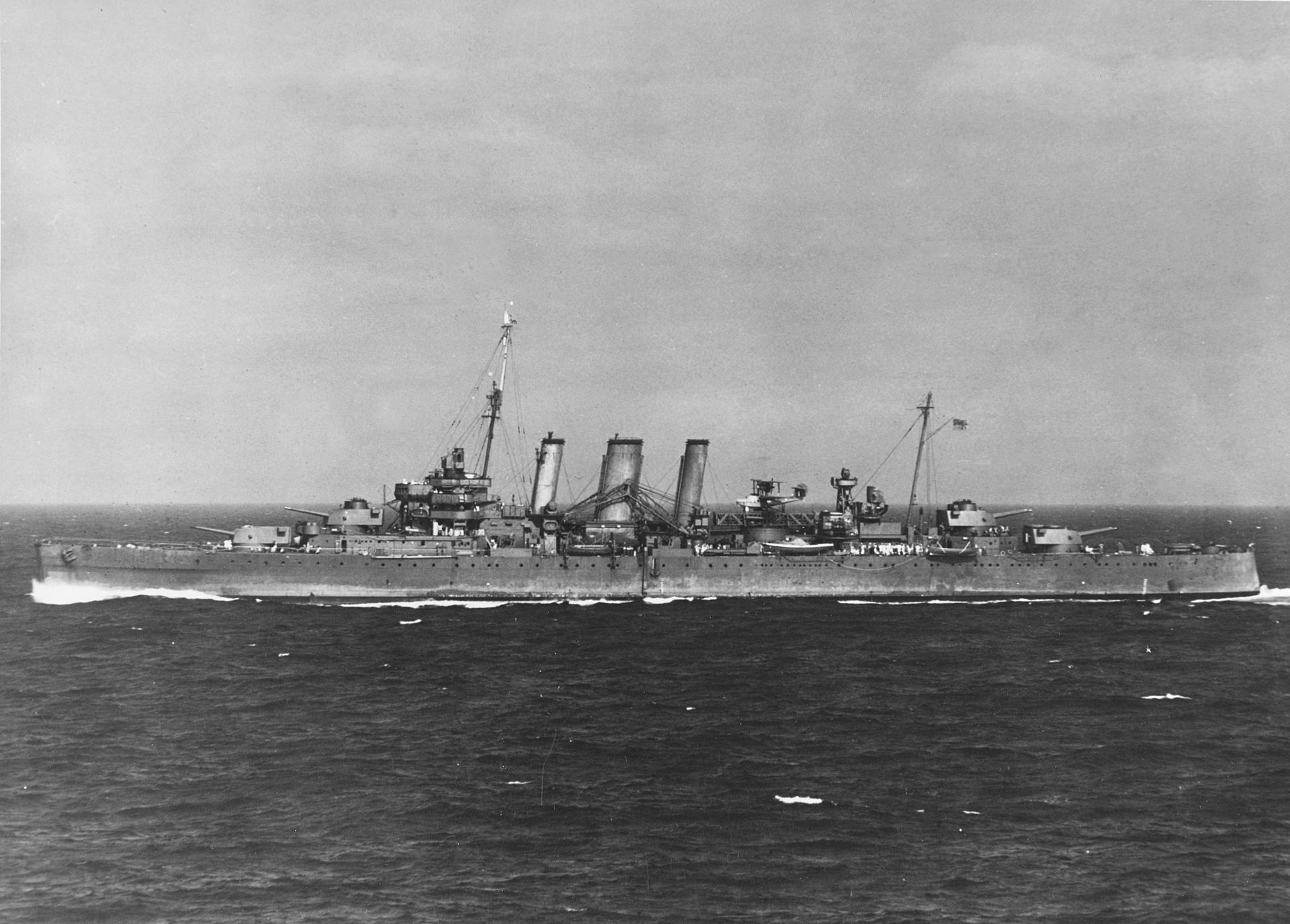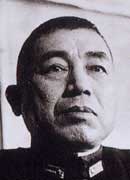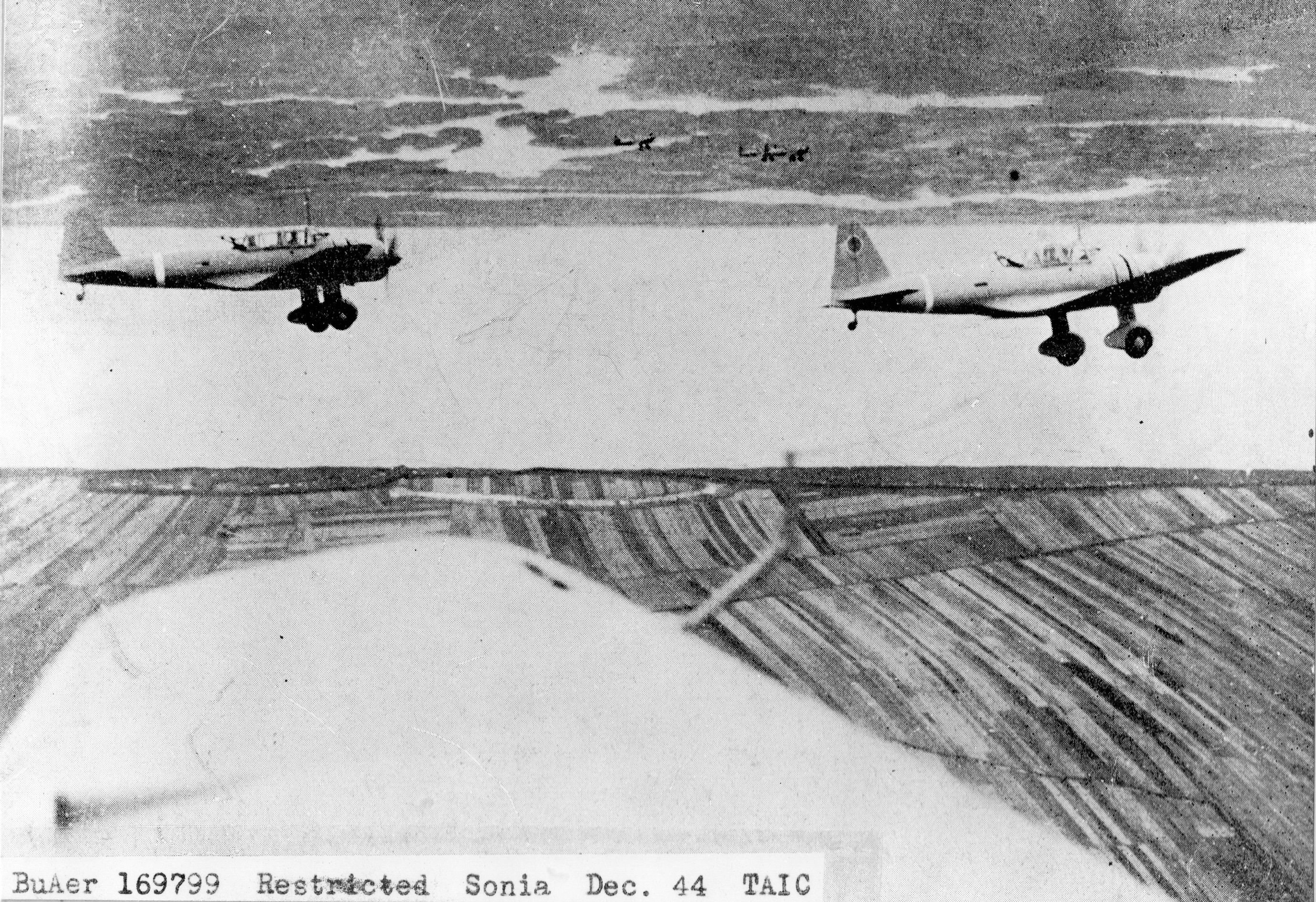Ten Days to Kamikaze is a series that explores the decision-making process and implementation of Japan’s use of suicidal crash dives during World War II. It provides an in-depth review of the critical ten-day period and examines the background leading up to those decisions. In a pivotal moment in October 1944, the first official Kamikaze mission was flown, marking a radical and deadly shift in Japanese military strategy. Despite the unwavering commitment of these suicidal pilots, days went by with no significant success in terms of damage inflicted upon enemy forces.
If you are just joining the series, you can read previous posts here:
Ten Days to Kamikaze – Part II
Ten Days to Kamikaze – Part III
Ten Days to Kamikaze – Part IV
Now on to Part VI!
October 21 – the first Kamikaze mission
An aircraft crashed into the cruiser H.M.A.S. Australia in the early morning hours. This was claimed as the first Kamikaze attack on an Allied ship in the official naval histories of both Great Britain and Australia. The claim, oft repeated, was renewed in news coverage of a ceremony aboard the guided missile destroyer Brisbane that memorialized and mourned the losses that occurred at the very spot were Australia was damaged fifty years after the crash.[1] After the fact the first Kamikaze mission was claimed for the Japanese army by various proponents. None of the examples claimed, the earliest being on 27 May 1944, were either officially ordered or intended to be suicide missions.[2]
The Luzon-based crash-dive pilots were having no luck with missions cancelled or unable to find targets. The first Kamikaze mission recorded as such was flown during the day. One pilot did not return from the mission. His loss has not previously been explained. The likely cause for the mission being unsuccessful as well as an account of the demise of the pilot is detailed here.
The day began early as bogies began to appear on radar of ships in Leyte Gulf before the sun rose. Up from Japanese army airbases during the morning were five Type 1 fighters, two Type 3 fighters, three twin-engine light bombers and six assault bombers. The first arrivals were reported as twin-engine bombers and torpedo bombers in various American reports. They were apparently Type 99 light bombers operating from Bacolod. Likely intent on skip bombing they appeared to be low level torpedo bombers in American eyes. Destroyer-minelayer U.S.S. Breese sighted three intruding planes and claimed a torpedo bomber (“Nell” or “Jill”) just before 0600. At the same time seaplane tender U.S.S. San Carlos reported an attack with one bomb falling within thirty yards causing no damage. Battleship California claimed a “Betty” a half hour later. San Carlos claimed a Betty, probably the same aircraft, which crashed close to her. Three LSMs and LST 917 jointly claimed a Betty within minutes of those claims. With the sun fully up two aircraft dropped bombs that missed California. Two other planes identified as Tonys dropped bombs which missed transport U.S.S. Custer. Later in the morning a four-plane flight of FM-2 Wildcats of VF-26 chased two Tonys. Lt. David McNeill and Ens. Robert Harrison each received credit for a Tony destroyed. Four of the Type 1 fighters were apparently aircraft reported as attacking without causing damage and leaving the area unscathed.

Type 99 (Lily) light bombers employed skip bombing tactics
Among the attackers taking off in the pre-dawn hours were six Type 99 assault bombers of Col. Monnosuke Ono’s 6th Flying Brigade, three each from the 65th and 66th FRs. As the sun rose, they came upon the ships of Task Force 74. One of the aircraft approached cruiser H.M.A.S. Australia from astern and in a low-level attack struck the foremast with its wing root before crashing into the sea. Its burning fuel rained down on the ship causing serious fires and small explosions.
It was 0605 when lookouts on Australia saw an aircraft at an angle off the stern of about ten degrees approaching from 2,000 yards. The stern approach blocked the ship’s eight-barrel pom-poms. One that broke through the stops got off a few rounds. A 40mm Bofors and a pair of 20mm Oerlikon guns fired and scored some hits in the short time available but could not stop the aircraft identified as a Val from crashing into the foremast. There were various accounts from different ships about the attack. Some mentioned only one aircraft; others thought at least four aircraft were involved with three shot down. Reports were inconsistent as to whether a bomb was dropped. There was no bomb explosion. The Australia’s Captain was one of thirty killed, the commander of Task Force 74 and more than sixty others were seriously wounded.
The war diary of the senior task force commander referred to this as an “unfortunate accident” and Samuel Eliot Morrison footnoted in his history of American naval operations that this was not a Kamikaze attack. Despite this the legend sprang up and was perpetuated that this was the first Kamikaze attack. Australia along with Honolulu damaged the previous day was escorted out of the area under her own power for repair. Unlike Honolulu she was repaired in time for additional war service and returned to the Philippines where off northern Luzon in January 1945 she was hit by Kamikazes on successive days, severely damaged but survived. Like the Admiral Arima legend H.M.A.S. Australia as first victim of a Kamikaze suicide attack lives on.
For the day seven of the attacking Japanese army aircraft failed to return. Three of them were Type 99 assault bombers of which two were reported to have gone down in flames. One of these no doubt was Australia’s attacker. Returning air crews of the 6th FB claimed an 8,000-ton transport damaged. Interestingly Honolulu’s attacker of the previous day also claimed her as a transport rather than a cruiser.

H.M.A.S. Australia was damaged by a Type 99 (Sonia) attack bomber
As fate would have it the attempted authentic suicide attacks were less effective and more costly to the Japanese than the day’s purported Kamikaze attack. The first was an attack launched from Mabalacat by the Shikishima Unit under Lt. Seki. The mission was launched based on a sighting report of American carriers to the east. The Zeros returned without attacking; no ships were found. The circumstances of this mission are described in the book Divine Wind. As a misfire it does not appear in lists of Kamikaze missions in that publication or in Japanese Monograph No. 84. Lt. Cdr. Nakajima notes similar attempted attacks thwarted by weather took place during the next few days.
During the day American counter-air strikes concentrated on the central and southern Philippines. The carriers of Task Force 38 launched 356 strike sorties; the escort carriers launched 44 planes on strike missions; and sorties by land-based planes numbered sixty-four. Among other damage these attacks upset plans for the second Kamikaze mission of the day.
Lt. Cdr. Nakajima arrived at Cebu the previous day and reorganized the Yamato crash dive unit from the pilots that came with him and volunteers at Cebu. It was the middle of the afternoon before an actionable sighting report was received – six aircraft carriers sixty miles east of Suluan Island. Nakajima was advised by Cebu’s maintenance officer that it would take more than half an hour to arm the three-bomb carrying Zeros, prepare them and their two escorts for flight and move them 500 meters uphill from their camouflaged dispersal area. Nakajima set about gathering flight data and preparing for the pilot briefing. Hardly ten minutes later Nakajima was briefing his pilots when he was informed the Zeros were ready. Five Zeros were on the field with engines ticking over. Nakajima quickly concluded the briefing and led the pilots from the operations room.
Meanwhile a strike force of twenty-eight fighters and sixteen Avengers had been launched from the escort carriers. The fighters included a division of four F6F-3’s from Chenango’s VF-35. According to their mission report:
Ordered to attack Cebu airfield with a group of other VF and VT, these 4 fighters proceeded to the target but had some difficulty due to a bad weather front. By flying as low as 400 feet and as high as 14,000 feet by a round-about route the target was reached. Here weather conditions were good with no clouds directly over the field. Lieutenant (junior grade) Colonel Grady Mills…and Ensign George John Mikulak…made two strafing runs on a line of five Zeros lined up nose to tail with engines turning up on the taxi strip preparing to taxi to the runway for takeoff. Lt. (j.g.) Mills strafed three of those and Ensign Mikulak the other two. All caught on fire and as our pilots left, they observed one of the planes explode. All five were definitely destroyed.
Ground crewmen ran to the planes to cut the engines as Mills and Mikulak began their strafing runs – to no avail. The planes were riddled with bullets. Fuel spurted out followed by flames. Nakajima and the pilots ran for cover. As the American report says all the Zeros were destroyed. This aborted the second planned suicide mission of the day.
Nakajima rushed to organize a substitute attack thinking the attackers might follow the American planes back to their carriers. As leader he chose Lt. (j.g.) Yoshiyasu Kuno. Nakajima and Kuno had spoken the previous evening. Kuno wondered if escorts were necessary or merely there to publicize what happened. Nakajima countered that it was important to report results to gather data useful for future sorties. Kuno questioned the need for fixed armament on the attackers. Nakajima responded that machine guns were needed in case interceptors were encountered on the way to the target or for protecting against pursuing fighters if the target was not found. Although he could not have known it then or later when he wrote about the events Nakajima’s comments were prescient.
In Divine Wind Nakajima relates that the three planes left at 1625 hours with them “went our prayers for success” but “they encountered bad weather and failed to locate the enemy. Two of the planes returned but — not Lieutenant Kuno…I feel confident he found a good target against which to crash.” A footnote to this account in Divine Wind, no doubt thanks to co-author Roger Pineau, says no American ship was sunk or damaged by suicide attack on 21 October 1944. No published account has provided additional insight into what happened.
Nakajima’s reference to bad weather is confirmed by American reports. Prior to 1700 hours, about the time Kuno’s fighters were approaching Leyte Gulf, American accounts note that there were squalls across the entire area. This is the area through which Kuno’s fighters had to pass to reach the reported position of the carriers. These circumstances might explain how Kuno became separated from his flight companions. Moreover, Kuno stated to Nakajima that if he could not find a carrier, his intended target, he would return to Leyte Gulf and crash the best target he could find. Kuno’s demise almost certainly relates to the only claim for a Zeke shot down that day – a single Zero shot down at 1748 hours over the entrance to Leyte Gulf. A Zero jumped four F6F-3 Hellcats of VF-60 at an altitude of about 4,500 feet making a pass at the last plane in the flight from a 30-degree angle and breaking off at long range apparently due to having failed in a surprise attack. The claim was made by Lt. (j.g.) Kenneth N. Montgomery. His clash with Lt. Kuno was described in the mission combat report:
The last plane in the formation called Tallyho, and started in pursuit of the Jap, using 2550 R.P.M and 54” of manifold pressure and closed rapidly. The Jap then began to dive for cloud cover 1½ to 2 miles away, but in the dive the F6F closed more rapidly. Three short bursts were fired into the fuselage and flames were seen issuing from the engine and cockpit. On the fourth burst from dead astern and slightly below, the left wing root burst into flames and the Zeke gradually dropped off on its left wing and hit the water. The plane disintegrated on hitting the water and there was very little debris and no sign of life.
Montgomery’s fast closure suggests that either Kuno had not jettisoned his bomb or was not getting the most out of his fighter. Kuno was listed among attacking Kamikaze pilots in official Japanese communiques.
A full week had gone by since American carriers struck Manila airbases as the opening round of the invasion of the Philippines. In the week Japanese navy aircraft had managed to inflict minor damage on two American aircraft carriers (CV Franklin and CVE Sangamon) both of which remained fully operational. Two major combatants (cruisers Honolulu and Australia) and a rescue vessel had been knocked out of action in conventional attacks. One cruiser fell victim to a navy torpedo attack plane and the other to a crashing army assault bomber. Other damage inflicted to combatant vessels was minor. The Japanese navy’s newly commissioned crash dive units suffered the loss of six planes and a pilot without scoring a single success.
Nearly four hundred aircraft of the Sixth Base Air Force had arrived in Formosa and were primed for the transfer to bases in Luzon. Fukudome’s air fleet numbered about 450 aircraft before it left Kyushu. Although not all had arrived safely in Formosa by the 21st four hundred was still a substantial number of aircraft.
October 22 – Reinforcements
V-Adm. Fukudome was at Takao in the morning overseeing the initial movement of his Sixth Base Air Force units to the Philippines. He had available over three hundred fighters, eighty-five attack aircraft, and seven reconnaissance planes. He expected to send well over two hundred of these south during the day. The first batch was launched during the morning. A dozen or so Tenzan carrier-attack planes and some fighters headed to Clark. The fighters were to provide CAP for aircraft arriving later in the day. Also involved in the morning transfer were more than two dozen floatplanes going to the seaplane base at Cavite in Manila Bay. While neutralizing American carrier air power was Fukudome’s foremost mission the threat American submarines posed to Japanese surface forces could not be ignored. Two floatplane units in the Philippines (Air Groups 954 and 955) were operating at greatly reduced strength. Anti-submarine warfare was the primary role of the floatplanes.
The transfer was not without complications. Some of the planes would go to 5th Base Air Force airfields where they would find underutilized maintenance crews to aid the small cadre of maintenance personnel involved in the transfer. However, some of the planes would go to 4th Air Army bases. Not all the assigned bases, whether army or navy, were fully equipped. Fukudome’s fighters included some of the new Shiden (codename George) interceptors a fighter unfamiliar to maintenance crews in the Philippines. Many Japanese airbases existed in airfield clusters and newly arriving aircraft might get to the general area assigned but not identify the specific runway upon which they were supposed to land. A senior staff officer from Fukudome’s air fleet had arrived a couple days earlier to sort out deployment issues. Planning was fine but the dynamics of ongoing combat, weather and limited facilities might trump plans.

Admiral Onishi and Lt. Gen. Tominaga were doing what they could to make the reception of Fukudome’s planes go smoothly. Moreover, reinforcements had been trickling to the 4th Air Army. Tominaga expected more, perhaps fifty additional aircraft, for his 2nd FD and 30th FB (most of his fighters were concentrated in the Flying Brigade) in addition to several planes that had arrived in the previous couple of days.
Both Japanese army and navy conducted search missions. Navy planes scouted east of Luzon and army planes east of Leyte. The army managed eleven attack sorties against Leyte Gulf which began before dawn but caused no reported damage. Three Type 1 fighters claimed a near miss on a destroyer. Two bombs passed between the stacks of U.S.S. Halligan and hit the water fifty yards from the ship without exploding. A Type 2 Two-seat fighter of the 45th FR claimed a 250kg bomb hit on a transport ship. Seven Type 99 attack bombers of the 65th and 66th FRs could not confirm any damage in their attacks due to the smoke screen the ships put up. One Japanese plane was lost. It was claimed as a Val and ran afoul of four VF-35 Hellcats with credit for its destruction going jointly to Lt. Samuel Dalzell, Jr. and the three members of his flight.
A second large batch of Fukudome’s units left Formosa in the early afternoon with a planned arrival in the late afternoon. Fukudome flying in a transport plane was scheduled to arrive at Clark at 1700 hours. More than two hundred aircraft arrived during the day. Transfer operations did not go off as well as hoped. Some aircraft were damaged on landing and others landed at the wrong airfield. Maintenance men assigned to some units ended up on different airfields from the ones where the planes they were supposed to service were located. Fukudome had harbored hopes of launching strong attacks on the 23rd but the partially disorganized state of his units upon arrival in the Philippines and bad weather upset that plan. Still, the arrival of his units constituted a major increase in naval air strength. If not in action on the 23rd they would be ready for the critical day, the 24th.
In the Philippines Fukudome left a direct reporting relationship with C-in-C Combined Fleet and came under the command of Admiral Mikawa. For a brief time until the 1st Combined Base Air Force was formed, he had a cooperative relationship with Onishi. As command relationships were worked out and reinforcements organized the various elements of Japanese surface forces that were to engage in the decisive battle moved closer to the Philippines. American intelligence was piecing together the position and basic vectors of the several Japanese forces involved.
Fukudome’s planes arrival in Luzon was important to both Onishi and Tominaga. Tominaga could concentrate his forces intended for attacks on Leyte Gulf in the Visayas knowing strong naval air forces were operating from Luzon. Onishi likewise could shift his limited number of Kamikaze planes to the south. An early morning reconnaissance conducted from 8,500m (28,000’) surveyed the entire Leyte Gulf area counting eighty transports as well as scores of warships and small craft ferrying troops and supplies from ship to shore. The location of landing operations and shipping concentrations were mapped out.
Reinforcements that arrived during the day as well as others scheduled to arrive on the 23rd were certainly needed. Halsey continued to operate two task groups of Task Force 38 in proximity to the Philippines and Task Group 77.4 remained east of Leyte. In each case aircraft aboard the carriers numbered over five hundred consisting of about three hundred fighters and two hundred strike aircraft. Moreover, SWPA air operations were scheduled to put eight squadrons of B-24s over Mindanao the following day and mount sweeps by long range P-38s.

Type 99 (Sonia) attack bombers were frequently misidentified as navy Val dive bombers
October 23 – Deployment
In a sense, the decisive battle the Japanese navy sought began on this day. During the day two Japanese heavy cruisers were sunk and a third crippled. They fell victim not to air attack but to American submarines in the vicinity of Palawan Passage. Japanese aerial anti-submarine operations were limited by the relatively small number of floatplanes to cover vast territory and, to some extent, by the same kind of squalls that had frustrated Japanese air searches and attack missions over the previous several days.
The weather had another impact during the day. The remainder of Fukudome’s planes transferring to the Philippines encountered bad weather that forced them to return to Formosa. The 6th Base Air Force was left with those aircraft that had arrived previously and were operational. The army’s 2nd FD ordered the deployment of most of its units to airbases on Negros Island leaving a few bomber units on Luzon. Deployment was to be completed by the end of the day. Headquarters 2nd FD moved to Bacolod. Onishi redeployed his Kamikaze units placing three of the units under the command of the 61st Air Flotilla headquartered at Davao.
In the late afternoon and evening Sixth Base Air Force ground personnel including maintenance personnel disembarked from destroyers at Manila. Their arrival was welcome but too late to be of much help to increase aircraft availability for the following day’s critical operations.
At midday, a PB4Y sighted one of the Japanese formations (2nd Striking Force). However, PB4Ys on other search tracks missed two other elements. They would do better the following day and carrier-based aircraft would also find targets to attack. During the day ten PBYs of Fleet Air Wing 10 (TG 73.7) arrived at Leyte Gulf operating from a tender. They flew their first three sorties the following evening.
There was some Japanese aerial activity over Leyte Gulf during the hours before dawn. The hours after morning twilight passed almost without belligerent aerial action. Almost. A six-plane flight of Hellcats from VF-35 sighted a “Val” on the deck over Leyte just before sunrise. Lt. (j.g.) Kenneth Wildeson hit the Japanese plane in the wing and engine. Then Ens. Robert Chaney fired on it sending it crashing into a hillside. An army Type 99 assault bomber (Sonia) of the 66th FR failed to return from a solo bombing mission. Also taking off in predawn darkness was the second officially listed Kamikaze flight. Just two Zero attackers of Yamato unit took off from Cebu at 0500 with no escort. Their target was an aircraft carrier east of Suluan Island. One Zero returned without attacking.[3] The Zero flown by Petty Officer Kaoru Sato failed to return. There is no evidence of their activities in Allied reports. Sato was posthumously promoted two ranks and mentioned in the official bulletin announcing Kamikaze pilots.
The bases that were to house the incoming planes of the 2nd FD came under attack during the day. Thirty-one fighters and twelve bomb carrying TBMs from the escort carriers hit Negros airfields. They claimed twenty-five aircraft destroyed and sixteen damaged on the ground. They estimated only a small number of aircraft remained operational on those fields. Many of their claims were probably decoys or derelicts. The majority of Tominaga’s planes had yet to arrive. American attacks may have inflicted some damage, however. Moreover, the poor condition of some airfields due to previous torrential rain and bomb damage probably caused other damage. At day’s end the 4th Air Army reportedly had 232 aircraft on hand but only 128 were operational; on the morrow that was likely to be the number available for initial attacks. Reinforcements might, however, raise the number during the day.
The planes of the Sixth Base Air Force were concentrated at Clark, and Mabalacat airfield complexes, and Bamban. The count of operational aircraft found that it had: (1) 105 Zero fighters, (2) 25 Type 99 (Val) carrier bombers, (3) 21 Shiden (N1K1) interceptors, (4) 20 Type 1 land attack planes, (5) 10 Suisei carrier bombers, (6) 10 Tenzan carrier attack bombers, and (7) 5 Ginga land bombers. In addition to these nearly two hundred aircraft several dozen additional planes were on Formosa but might not arrive in time to attack on the following day. The aircraft were a mix of newer and older models. Pilots were also a mixed bag. As many as half the assembled Zeros belonged to fighter units of Air Group 221. Seaman Kazuo Shima of S308 professed in his POW interrogation report to have barely 110 hours of flying time, 40 hours in a Type 93 trainer, 35 hours in a two-seat Zero trainer and 36 hours in a Zero fighter.[4] Translated flight personnel rosters for pilots of Air Group 221 indicate there was a mix of experience levels among pilots. Many were rated at the D level of experience, and some had as few flight hours as claimed by Shima.[5] Shima flew his first combat mission in the attack the following day.
Lt. Seki’s Shikishima unit remained at Mabalacat but three other crash dive units went south to Mindanao. Ten Zeros and a Suisei guide plane headed for Davao No. 1 (Asahi and Yamazakura units). Two Zeros were lost on the way. Five Zeros and a Suisei initially transferred to Cagayan (Kikusui unit) but later joined the other units at Davao. Yamato unit remained at Cebu. The Fifth Base Air Force was down to barely three dozen operational aircraft of which about two dozen were in the special attack units. Only a few Type 1 land attack bombers and Tenzan carrier attack planes were available to supplement Fukudome’s force. Ozawa’s carrier force was approaching a position east of the norther tip of Luzon. With just 116 aircraft aboard its four carriers its primary purpose was to decoy Halsey’s carriers away from the main surface battle zone. Japan’s conventional and crash dive units were in place for the coming battle.
[1] See Dunn, Reconsidering the Attack on HMAS Australia October 21st, 1944, 2 The Journal of Australian Naval History 48 (2002).
[2] Dunn, First Kamikaze, https://j-aircraft.com/research/rdunn/hms_aust/first_kam.htm (2005). Among the claims, Imperial General Headquarters announced as reported by Domei news agency, the sinking of a British Indomitable class aircraft carrier on 19 October 1944 by a single Type 1 fighter after it had engaged in air combat by “body-crash attack”. The pilot was identified as 1Lt. Nobuhiro Abe son of Gen. Nobuyuki Abe former Prime Minister and Governor-General of Korea. There was air combat between Oscars of the 1st Field Replacement Unit and British fighters, but no British warship was sunk or damaged.
[3] The chart giving attack details in Japanese Monograph No. 84 contains a notation that the return was “due to engine trouble.”
[4] Shima POW interrogation report (note 4, Part V).
[5] Rosters of Flight Personnel, S312, S313, and S407 ADVATIS Bull. No. 368.
